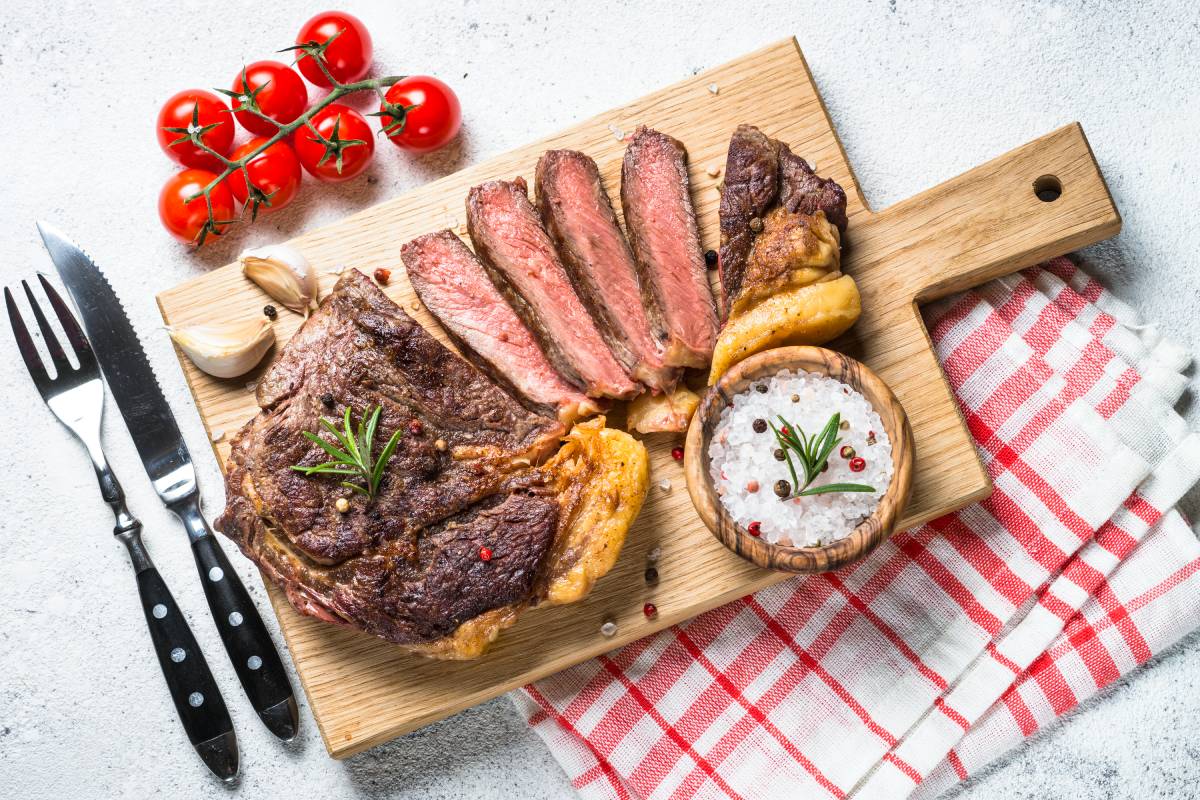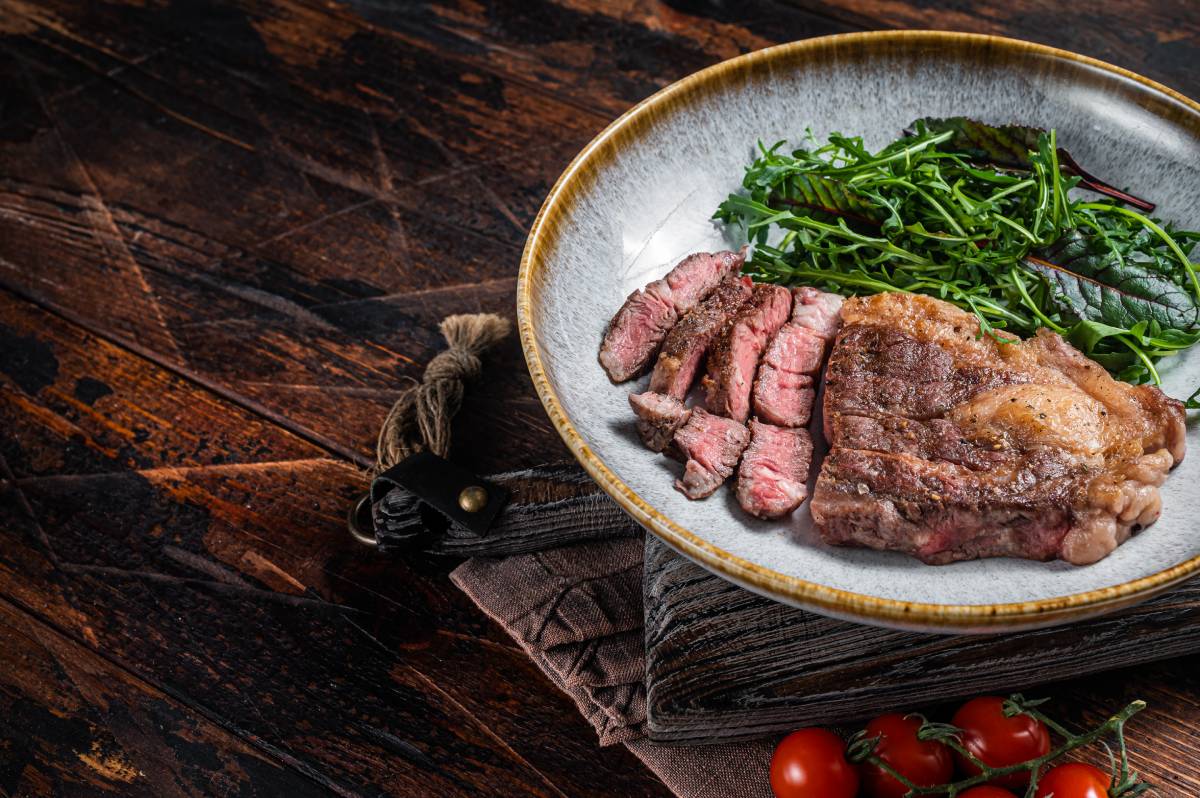When it comes to indulging in a sumptuous steak dinner, there’s more to it than just throwing a piece of meat on the grill. Understanding the various cuts of steak, the levels of doneness, and the right grilling techniques are essential elements in creating a culinary masterpiece.
This guide aims to break down the complexities and provide you with a comprehensive overview of how to choose the right cut, achieve the perfect doneness, and master the art of grilling for an unparalleled dining experience.

I. Choosing the Right Cut of Steak: Unveiling the Options
Understanding Different Cuts: Selecting the right cut is the foundation of a stellar steak experience. Various cuts offer distinct textures, flavours, and tenderness. Here’s a breakdown of common steak cuts:
- Ribeye:
- Flavorful and Juicy: Known for its rich marbling, the ribeye is a favourite among steak enthusiasts. The marbled fat enhances the flavour and juiciness, making it a go-to choice for those who love a robust taste.
- Filet Mignon:
- Tender Elegance: If tenderness is your priority, filet mignon is your answer. This cut is incredibly tender, though it may lack the intense marbling of other cuts. Perfect for those who savour a melt-in-your-mouth experience.
- New York Strip:
- Balanced Delight: Situated between tenderness and flavour, the New York strip offers a balanced combination. It’s a versatile cut appreciated for its robust taste and moderate marbling.
- T-Bone and Porterhouse:
- Best of Both Worlds: These cuts feature both the tenderloin and strip steak, providing a dual experience of tenderness and flavour. Ideal for those who can’t decide between the two.
- Sirloin:
- Affordable Flavor: For those on a budget without compromising on taste, sirloin is an excellent choice. It’s flavorful and less expensive than some premium cuts.
Choosing Based on Preferences: Understanding the characteristics of each cut allows you to tailor your selection to personal preferences. Whether you prioritize tenderness, marbling, or a balance of both, there’s a perfect cut waiting for you.
II. Understanding Steak Doneness Levels: A Spectrum of Flavors
Rare: For those who prefer their steak nearly raw in the centre, a rare steak offers a cool, red centre. The exterior is seared, providing a contrast in textures.
Medium Rare: This is the sweet spot for many steak enthusiasts. A medium-rare steak features a warm, red centre and is seared on the outside, preserving the juiciness within.
Medium: Stepping into the territory of a more thoroughly cooked steak, medium doneness boasts a pink centre. It offers a balance between tenderness and a well-cooked exterior.
Medium Well: Approaching well-done, a medium-well steak has a slightly pink centre but is mostly cooked through. It maintains some juiciness while achieving a more robust flavour.
Well Done: For those who prefer their steak fully cooked, well-done is the choice. It has a uniformly browned interior, providing a firmer texture and a more intense flavour.
Tip for Precision: Investing in a reliable meat thermometer ensures accuracy in achieving your desired doneness. This small tool can make a significant difference in the outcome of your steak.
III. Grilling Techniques for Different Cuts of Steak: Elevating Flavor to New Heights
Preparation: Before diving into grilling techniques, proper preparation is crucial. Ensure your steak is at room temperature and pat it dry with paper towels to promote a good sear.
High Heat Searing for Ribeye: Ribeye’s marbled fat benefits from high heat searing. Start with a hot grill to achieve a caramelized crust while maintaining the juicy interior. For thicker cuts, consider a reverse-sear method for even cooking.
Quick and Hot for Filet Mignon: Filet mignon’s tenderness shines with quick, high-heat cooking. Aim for a hot grill to sear the exterior while preserving the delicate interior. Keep an eye on the cooking time to avoid overcooking.
Two-Zone Cooking for New York Strip: The New York strip benefits from a two-zone grilling method. Start with high heat for searing, then move to a cooler zone to finish cooking. This ensures a flavorful crust and even doneness.
Indirect Heat for T-Bone and Porterhouse: These substantial cuts require a combination of direct and indirect heat. Begin with searing over high heat, then move to an indirect heat zone to allow thorough cooking without burning the exterior.
The versatility of Sirloin: Sirloin’s affordability comes with the versatility of cooking methods. Whether you choose high heat for a quick sear or indirect heat for slower cooking, sirloin adapts well to various grilling techniques.

Embarking on a journey to create the perfect steak is more than a culinary pursuit; it’s an art form. From the selection of the finest cut to mastering the intricacies of doneness levels and grilling techniques, each step contributes to the symphony of flavours that define a remarkable dining experience.
This comprehensive guide seeks to demystify the nuances, empowering you to elevate your steak game. Get ready to unravel the secrets behind choosing the ideal cut, understanding doneness levels, and mastering the grill, as we delve into the world of creating a steak that transcends the ordinary.
Conclusion
In the realm of gastronomy, mastering the art of steak is a gratifying endeavour that transforms a simple meal into a memorable experience. Armed with insights into cut selection, doneness levels, and grilling techniques, you now possess the keys to crafting a steak that suits your palate perfectly.
So, fire up the grill, embrace the sizzle, and let the aroma of a perfectly cooked steak envelop your senses. May your culinary adventures continue to unfold, and may each bite be a celebration of your newfound expertise in the artistry of steak. Cheers to many more delectable moments at the dinner table!






